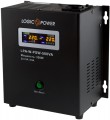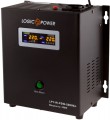Add to comparison |  |  |
|---|---|---|
| Logicpower LPA-W-PSW-500VA 500 VA | Logicpower LPY-W-PSW-500VA Plus 500 VA | |
| Outdated Product | Outdated Product | |
| User reviews | ||
| TOP sellers | ||
Interactive UPS. Correct sinusoid. Cold start. Quiet work. | ||
| Type | smart | smart |
| Form factor | shutdown timer | shutdown timer |
| Switching to battery | 6 ms | 4 ms |
Input | ||
| Input voltage | 1 phase (230V) | 1 phase (230V) |
| Input voltage range | 140 – 275 V | 140 – 275 V |
| Bypass (direct connection) | is absent | is absent |
Output | ||
| Output voltage | 1 phase (230V) | 1 phase (230V) |
| Peak output power | 500 VA | 500 VA |
| Rated output power | 350 W | 350 W |
| Output waveform | pure sine wave (PSW) | pure sine wave (PSW) |
| Output frequency | 50/60 Hz | 50/60 Hz |
| Redundant sockets | 1 | 1 |
| Socket type | type F (Schuko) | type F (Schuko) |
Battery | ||
| Battery in set | no battery | no battery |
| Battery(ies) connection to UPS | 12 V | 12 V |
| Min. charging current | 5 А | |
| Max. charging current | 10 А | |
| Charging current regulation | ||
| LiFePO4 charging support | ||
| Cold start | ||
| External battery connection | ||
Protection | ||
| Protection | short circuit protection overload protection external battery overcharge protection noise filtering sound alarm | short circuit protection overload protection external battery overcharge protection noise filtering sound alarm |
| Fuse | auto | auto |
General | ||
| Screen | ||
| Operating temperature | 0 – 40 °C | |
| Noise level | 40 dB | |
| Dimensions (HxWxD) | 255x220x155 mm | 255x220x155 mm |
| Weight | 4.9 kg | 4.9 kg |
| Added to E-Catalog | february 2020 | august 2019 |